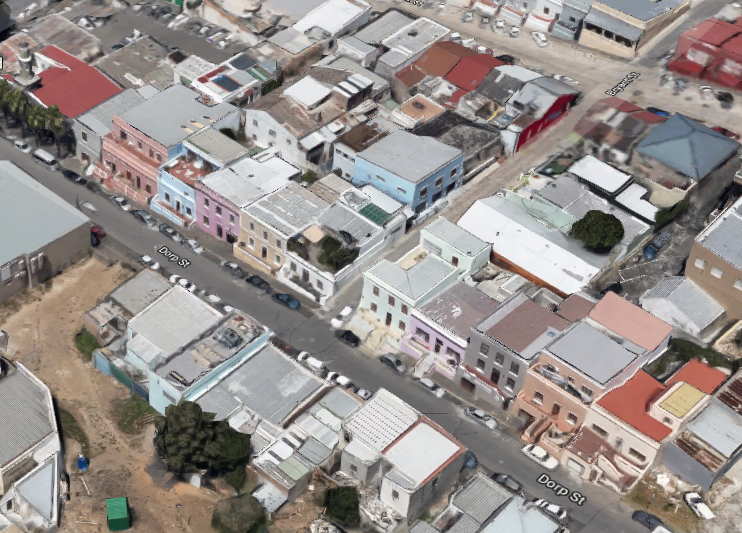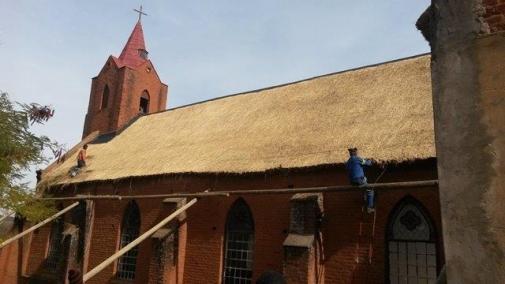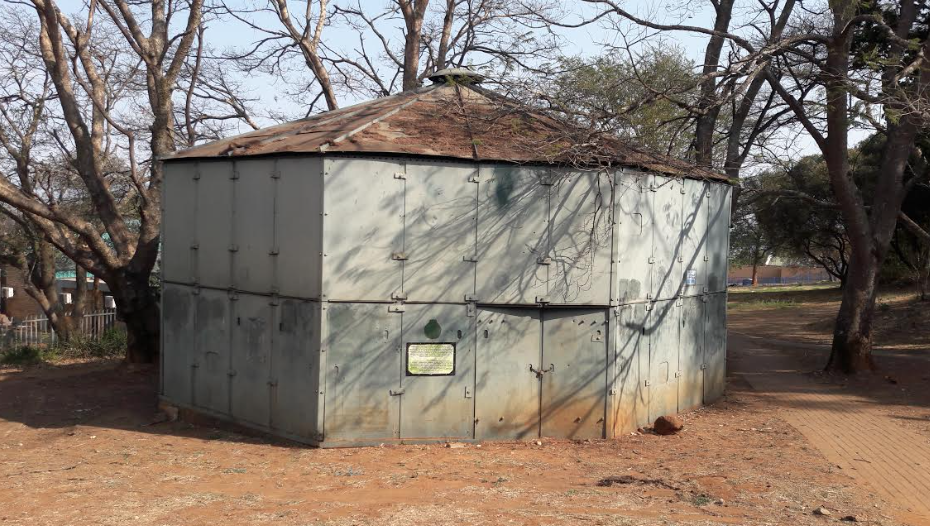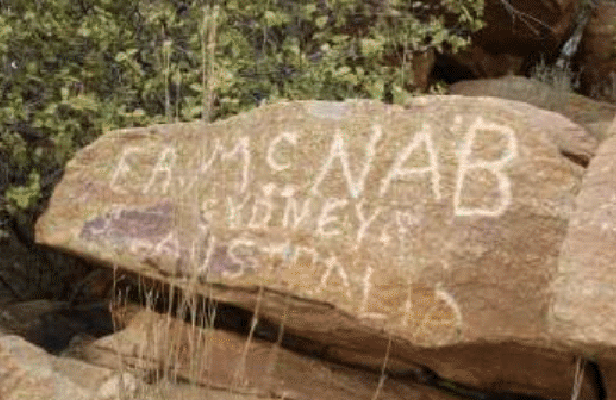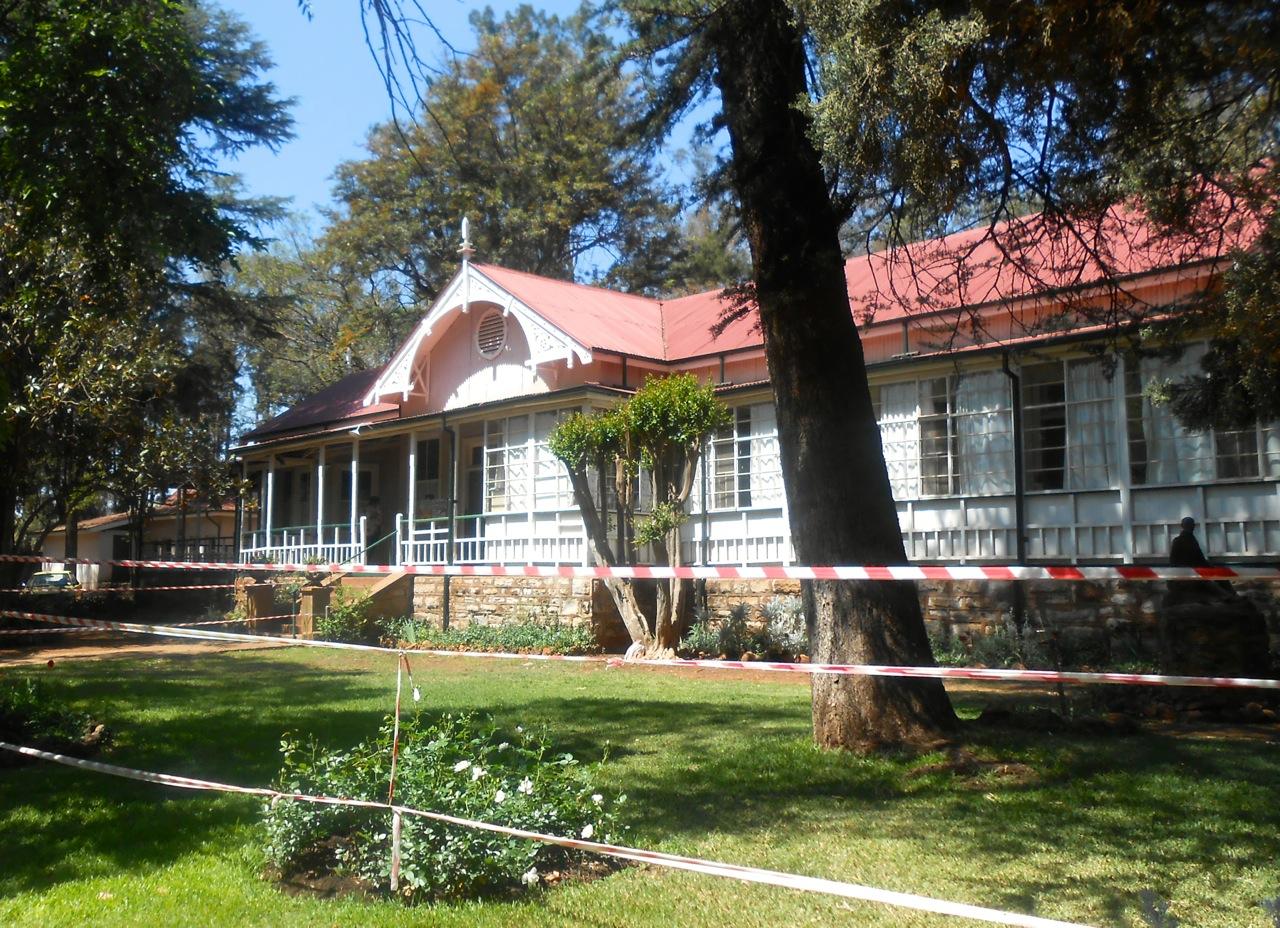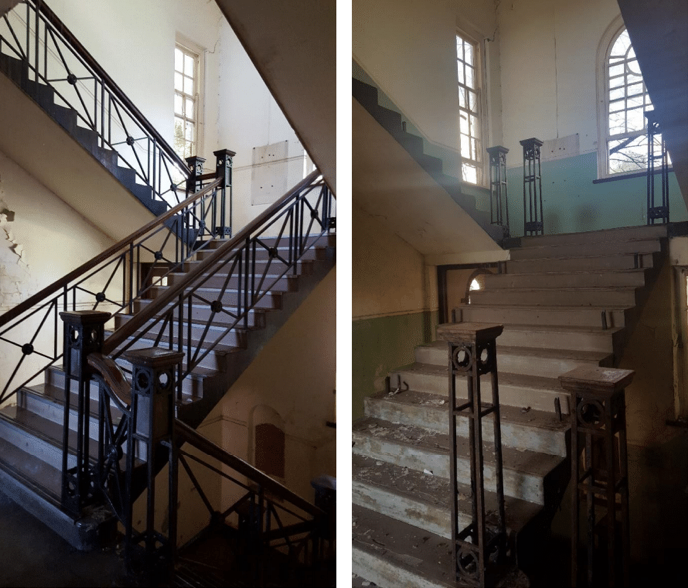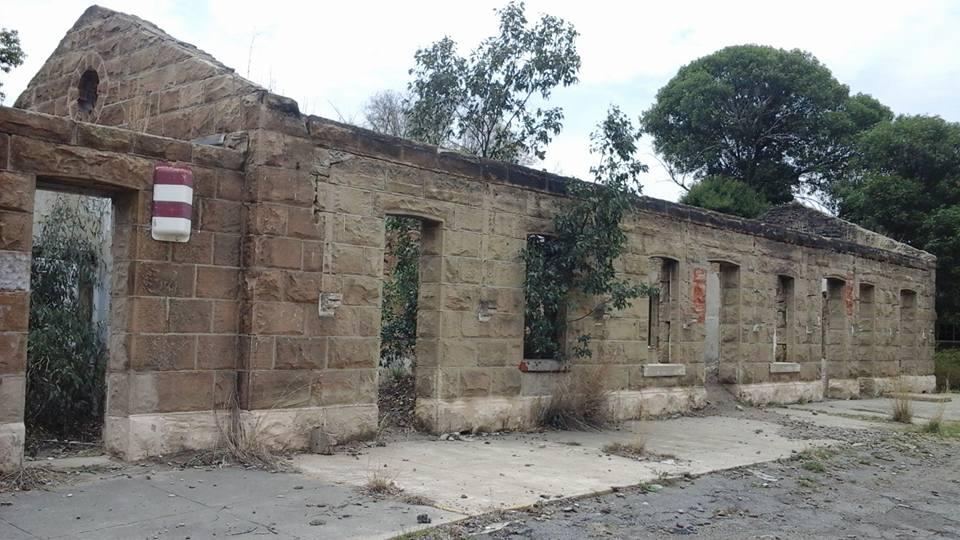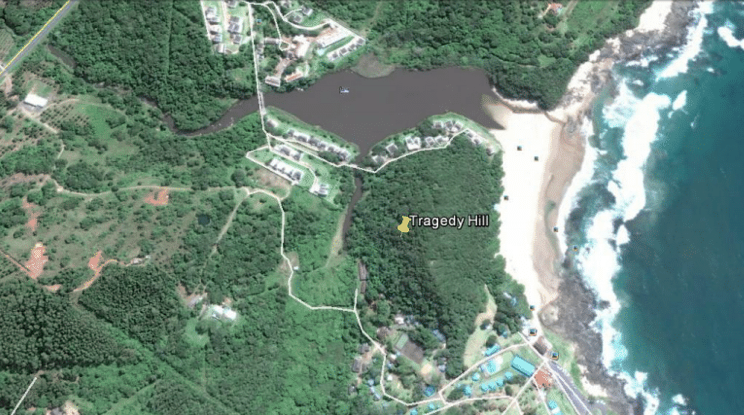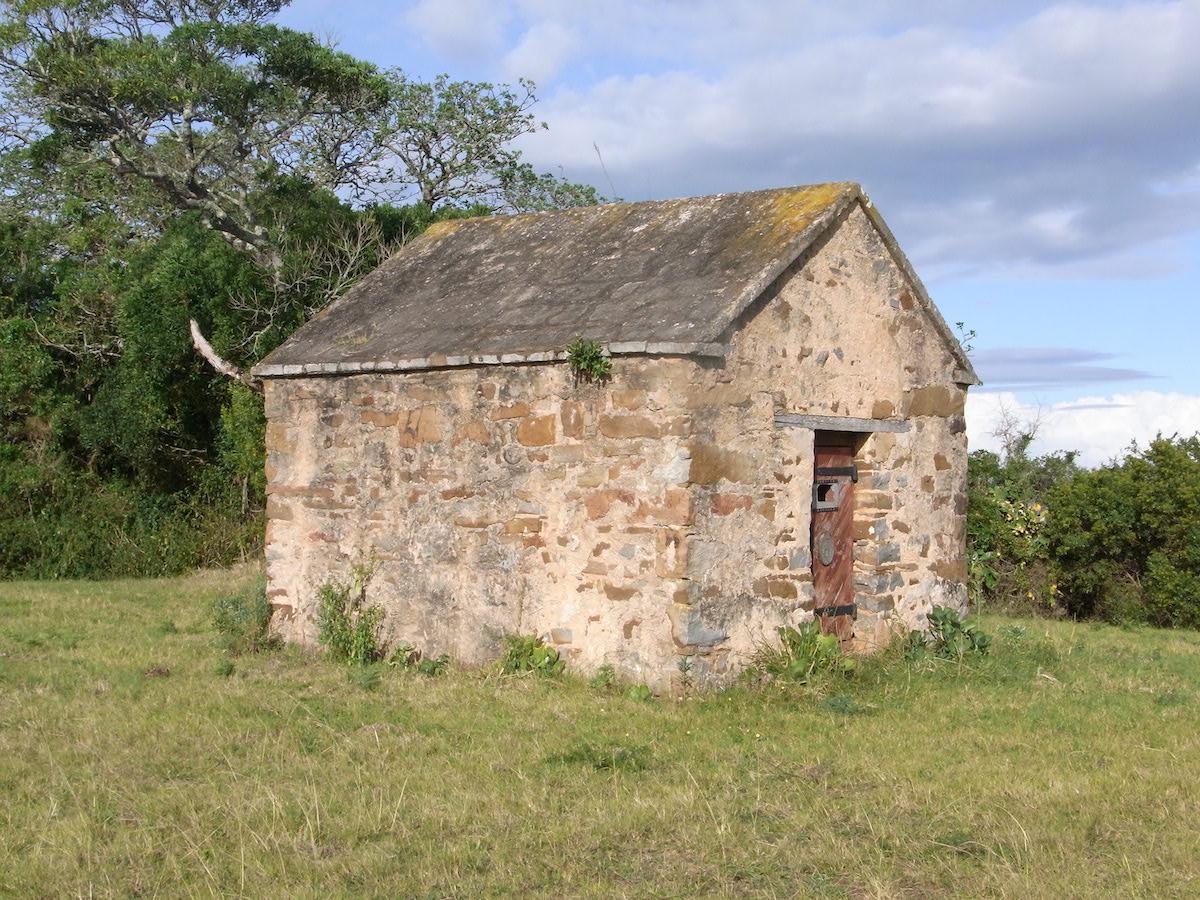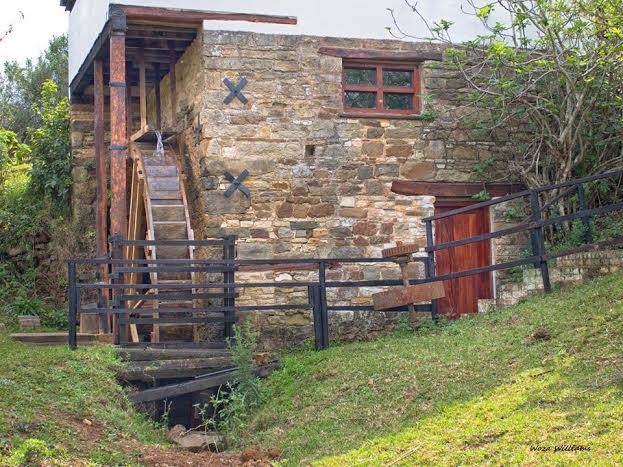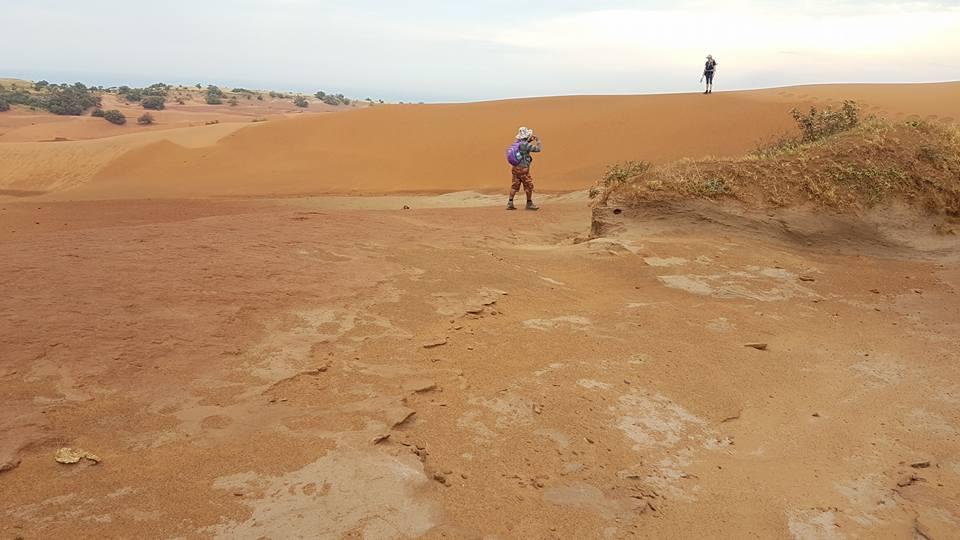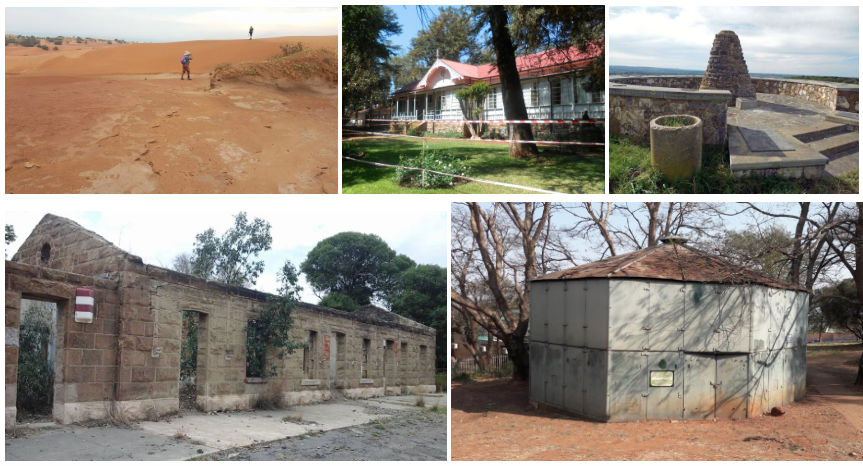
Disclaimer: Any views expressed by individuals and organisations are their own and do not in any way represent the views of The Heritage Portal. If you find any mistakes or historical inaccuracies, please contact the editor.
The Most Endangered Cultural Heritage Sites campaign is an initiative of the Heritage Monitoring Project (HMP) to identify and raise awareness of cultural heritage sites that are at significant risk from natural or human made forces.
The campaign is an attempt to raise public awareness of the incredible courage and dedication of individuals and local organisations fighting uncaring administrations and land owners, developers, powerful international and local mining interests and natural forces as they try to save the country’s heritage. “More importantly, we aim to provide a platform for heritage activists to share with the public their vision for at-risk sites and how communities can assist overcoming these risks”, says HMP co-founder, Jacques Stoltz.
This year was the second time that the HMP issued a call to the public to nominate sites of concern. In total, more than 35 heritage sites across a range of categories were submitted. The nominations included historic buildings and structures, cemeteries, sites of conflict, museums, mills, memorials, a mission station, a fortification, a cultural park and even a jetty.
The overwhelming public response to the call for nominations continues to show that South Africans are deeply concerned about the state of their cultural heritage.
Yet again, most of the sites share common threats, such as a lack of maintenance, lack of funding or other resources, mining, development pressure, lack of development and investment, gentrification or, simply, official neglect.
“Each year’s nominations provide an opportunity to respond to emerging themes or trends, often a particular site tells us about what may be happening at a wider regional or national level that requires urgent attention”, Stoltz says.
He says, that the HMP and the judges are acutely aware that some heritage communities and activists are more privileged than others in having access to the necessary resources to prepare nominations – and more importantly, to organise locally. However, “by running the campaign regularly, we hope that the list will become more inclusive and representative of the rich variety of heritages our country is home to”.
The final list of sites (in alphabetic order):
1) Bo-Kaap, Cape Town, Western Cape
Why this site matters
Containing some of the oldest and most intact Cape residential architecture, the Bo-Kaap has justly become a Cape Town icon with its distinctive colourful houses regularly featured in international travel magazines as integral to the South African tourist experience. With the first buildings dating from the 1760s, the Bo-Kaap was initially built by and for artisans and craftsmen but soon the district became home to Muslims and freed slaves following the abolition of slavery at the Cape. Many residents are direct descendants of slaves brought from the Indonesian Archipelago, India and Madagascar. For this reason, the Bo-Kaap is a rare South African example of a historic residential community still residing in the houses of their forebears, with cultural and religious institutions and practices still evident.
Why this site is endangered
The Bo-Kaap is threatened by ongoing gentrification, insensitive developments approved by the City of Cape Town – often resulting in over-scaled, high-rise buildings, land uses being approved in conflict with the predominantly residential character of the area and rapidly increasing rates and taxes as property values in the city have skyrocketed in recent years. Many residents say they are being stonewalled by the City of Cape Town and accuse the council of being complicit in what they describe as “apartheid spatial planning”.
The judges concur with the Bo-Kaap Civic and Ratepayers Association that urgent safeguards are required to protect the rights of tenancy of the historic resident community. The Association has called on the urgent declaration of the Bo-Kaap as a national heritage site and for the proposed Heritage Protection Overlay Zone to be adopted and enforced by the City of Cape Town. Click here to view tracking thread.
Local champion: Bo-Kaap Civic and Ratepayers Association
An aerial view of part of the Bo-Kaap (Google)
2) Botshabelo Mission Station, Mpumalanga
Why this site matters
Botshabelo was founded by Alexander Merensky and Heinrich Gruntzner in 1865 as a place of safety for missionaries and Swazi and Bapedi converts following the suppression of Christianity by Sekhukune, King of the Bapedi. This German Lutheran Mission Station developed into a small town (containing a collection of an estimated 80 buildings) and a Fort (Fort Wilhelm, or, Fort Merensky, as it is known today) was constructed to protect the community from possible attack. From 1972, under the auspices of the Middelburg town council, Botshabelo was administered as a museum and a Ndebele historical village established. Pioneer black South African artist, Gerard Sekoto was born in Botshabelo, and it is here that famed-artist Esther Mahlangu started her career.
Why this site is endangered
In 2005, following a successful land claim application, the Botshabelo Community Development Trust gained ownership of land falling within the Botshabelo Nature Reserve. Infighting among the claimant community however resulted in years of neglect leading to buildings being vandalised, fences being stolen, the disappearance of historical objects and, importantly, the loss of tourism revenue as visitor numbers dwindled. While a new interim board has been appointed to manage the Trust, the future of Botshabelo remains uncertain. It must be acknowledged that there are welcome signs that things are slowly improving. Most notable has been the restoration of the severely damaged 1860s church completed earlier this year. While the judges welcome these tentative steps at rehabilitating Botshabelo, due to its national significance, they have placed Botshabelo on the 2017 endangered list. By including the site, it is hoped that the Trust with the involvement and support of the various authorities and stakeholders concerned, will take further steps to stabilise what should be a showcase land reform project and to implement sustainable measures for the long-term management of the invaluable legacy and heritage of Botshabelo. Click here to view tracking thread.
Local Champion: Mpumalanga Heritage
Botshabelo Church roof and walls repair from May 2017 (Klaus Gastrow)
3) Fort Hendrina, Makhado, Limpopo
Why this site matters
This is believed to be the only extant iron fort that remains in South Africa. These forts were designed in 1887 by Captain Adolph Zbořil, an Austrian, who became the second highest ranking officer in the Transvaal Artillery. The forts were made from heavy armour plates and could be dismantled and reassembled elsewhere in the field. It is estimated that about 20 to 25 soldiers could be accommodated in a single one. Fort Hendrina was used in various military campaigns before, during and after the South African Anglo-Boer War (1899 – 1902). It is a grade II provincial heritage site.
Why this site is endangered
The Makhado Local Municipality is the custodian. Activists claim that the fort has all but been abandoned by the municipality and it is now victim to neglect, vandalism and in urgent need of restoration. Click here to view tracking thread.
Local champion: Erfeniskomitee (Louis Trichardt & Surrounds)
Fort Hendrina (Petria de Vaal-Senekal)
4) Goudkoppie Heritage Hill, North-West
Why this site matters
Goudkoppie Heritage Hill is a grade II provincial heritage site containing a replica Iron Age village, original Khoesan rock art and stone tools, a South African War blockhouse and war era graffiti, remains of late 19th century gold mining activity and geological history connected with the gold deposits mined in the area.
Why this site is endangered
A lack of funding to address the urgent need for security at the site hampers efforts to stop vagrancy, vandalism and illegal mining. The poor state of facilities is also deterring tourists. Click here to view tracking thread.
Local champion: Klerksdorp Museum
Graffiti from the South African War
5) Jan Smuts House Museum, Irene, Gauteng
Why this site matters
The recent release of a new biography on Jan Smuts shows that the world is not quite done with this enigmatic, although compromised South African leader. The wood and corrugated iron house, which served as an officers' mess during the South African Anglo-Boer War, was purchased by Smuts and reconstructed at Irene. It was for many years a natural port of call and place of pilgrimage for prominent South Africans and overseas visitors. Amongst these were royals such as Princess Frederika of Hanover and Greece (who lived there during the second world war). In 1947 the Royal Visit included King George VI and Queen Elizabeth of England; Prince of Wales (later King Edward VIII of England); Princess Elizabeth (later Queen Elizabeth II of England) and Princess Margaret (later Lady Snowden). The Royal Visit was extensively covered in the South African and Foreign press. Other visitors included politicians such as high commissioners and governors Selborne, Milner and Gladstone; South African prime ministers Botha, Hertzog and Malan; South African scientists and literary figures ranging from Olive Schreiner and Sarah Gertrude Millin to Raymond Dart, IB Pole-Evans, and AL du Toit, and celebrities including Noel Coward, Sybil Thorndike and George Formby.
Why this site is endangered
The trustees of the Jan Smuts Foundation face a number of challenges. The house and grounds have never benefitted from official patronage. They have been cared for by a private foundation and by enthusiasts who now find the task rather daunting.
Overall, Smuts House is in a poor state of repair and the valuable library with rare books dating from the 16th century lacks the requisite climate control necessary for the preservation of a priceless collection. Most importantly, the museum needs resources to explore ways of making Smuts House relevant to new audiences. Click here to view tracking thread.
Local champion: The Trustees and Board members of the Jan Smuts Foundation
Smuts House (The Heritage Portal)
6) Old Nurse's Residence (Children's Memorial Institute), Johannesburg, Gauteng
Why this site matters
This residence was opened in 1923 as part of the original Transvaal Memorial Hospital for Children. Initiated by the National Council for Women to commemorate the lives lost in the First World War, the nurse’s residence together with the Memorial Hall, two wards, a chapel and a synagogue was designed in the Classicist mould by architects Cowin, Powers and Ellis.
The hospital complex, opened in 1923 by Prince Arthur of Connaught, was the second dedicated children's hospital in South Africa making it one of the oldest children’s hospitals in Africa. It was an important training and research space for Paediatrics in South Africa, predating its more well-known counterpart the Red Cross Children’s Hospital in Cape Town by over three decades.
Why this site is endangered
The Nurse’s Residence has been unoccupied since 1978 when the children’s hospital functions moved to the Johannesburg General Hospital (now Charlotte Maxeke Johannesburg Academic Hospital). The building is managed by the Gauteng Department of Infrastructure Development together with the Gauteng Department of Health. However, a lack of proper asset management and maintenance, poor security, vandalism and informal occupation has left the building stripped of many unique original features and equipment. With doors stolen and windows broken, structural concerns are increasingly apparent. While the adjacent CMI Building is used by an estimated 30 Not-for-Profit organisations – all focussing on vulnerable children’s health, welfare and development, the Nurse’s Residence stands abandoned and is a security risk in what is meant to be a safe space for children. The judges concur that this is a telling example of poor heritage custodianship on the part of the Gauteng Provincial Government. Click here to view tracking thread.
Local champion: Children’s Memorial Institute - Historical Committee
A deteriorating staircase - 2015 (left) and 2017 (right)
7) Railway Stations & associated structures, across South Africa
Why these sites matter
A report released earlier this year by the University of Pretoria’s Department of Architecture detailed the rich extent of the cultural heritage of the Netherlands-South African Railway Company (Nederlandsche-Zuid-Afrikaansche Spoorwegmaatschappij, or NZASM). The research detailed the heritage significance of hundreds of railway stations, sheds, bridges, residential buildings and other structures scattered across the northern parts of the country in an enterprise that was international in scale. Over 350 previously unknown NZASM structures were surveyed. This study was fortuitous, as it confirmed what many communities across the country know – that valuable structures have been abandoned and left to decay, principally by Transnet. The communities of Grahamstown (Eastern Cape), Hilton (KwaZulu-Natal) and Heilbron (Free State), argue that with the necessary willpower Transnet can release these sites for adaptive reuse, returning once bustling economic hubs back to productive use in communities that were hard-hit by the closure of the railway lines.
Why these sites are endangered
The Grahamstown Railway Station and platform was completed in 1879 (click here to view tracking thread). The last line closed in 2009, not only relegating the station to decay and vandalism, but also isolating sidings at Atherstone, New Years River and Alicedale. The Heilbron Station constructed in sandstone dates from the previous turn of the century. After, the closure of the line the building was left vacant and has since been vandalised to the extent that it no longer has a roof. Local heritage activists Twin Mosia and Piet Lombard would like to develop the site as a mixed-use tourism attraction (click here to view tracking thread). Both the Grahamstown and Heilbron stations are grade II provincial heritage sites. The Hilton Railway Station (click here to view tracking thread) dates to 1888 and is believed to be the last remaining railway station on the original Durban to Johannesburg line. The station was used during the filming of the 1995 version of ‘Cry the Beloved Country’.
Local champion: Grahamstown Residents Association, Twin Mosia and Piet Lombard (Heilbron) and Hilton Steam Heritage Association (Hilton).
Heilbron Railway Station (Twin Mosia and Piet Lombard)
8) Tragedy Hill, Port Edward, KwaZulu-Natal
Why this site matters
Tragedy Hill was the site where settlers from the party of Henry Francis Fynn and members of the local eLangeni people were killed by Zulu warriors in 1831 after an apparent misunderstanding over royal cattle belonging to Zulu king Dingane. Tragedy Hill was also the site of an earlier, dramatic incident when the ‘São João’ became the first cargo ship wrecked along South Africa’s coastline in June of 1552. The fate of its cargo, passengers and crew, has become arguably the most famous of all Portuguese shipwreck stories and is often recounted in the literature on early European trading with the east. Artefacts from the 1500s have been found at sites in the area.
Why this site is endangered
The landowner of an adjacent piece of property has applied for a mining permit to begin sand mining and create a borrow pit directly adjacent to Tragedy Hill. It is believed that the borrow pit may be linked to construction projects for the upgrade of the R61 between the Mtamvuna and Mbizana rivers. In the view of the judges, mining should never be allowed at the cost of heritage. The proposed mining also threatens Port Edward’s tourism economy. Click here to view tracking thread.
Local champion: Leisure Bay/Glenmore Community
Tragedy Hill location (Google Earth)
9) Village of Bathurst, Bathurst, Eastern Cape
Why this site matters
In three years’ time, South Africa will commemorate the bicentenary of the arrival of the 1820 British Settlers. The Village of Bathurst lies at the heart of ‘settler country’ and is home to a number of historic sites and buildings that date back to the first settlers. Some of the buildings are in urgent need of repair and restoration work. The judges include Bathurst on the 2017 list in order to show support to the efforts of local heritage champion, Historic Bathurst, and encourage initiatives underway to ensure that the bicentenary tells the story from both the British and amaXhosa perspectives.
Why this site is endangered
Historic Bathurst has identified a number of endangered sites that they hope to restore in time for the bicentenary. The 1820 Centenary Memorial Hall (built in 1920) is a well-used community facility, however the roof of the building has been compromised and needs to be replaced. This will allow a series of tapestries, removed for safekeeping, to be placed on public display again (click here to view tracking thread). The Bradshaw Mill was the first mill to be built in the Eastern Cape and probably the first in South Africa. The Mill was constructed in 1822. The spinning machine and loom were imported from Gloucestershire in England. During the Sixth Frontier War, amaXhosa soldiers set the mill on fire, but it was rebuilt in 1836. While the mill remains operational and is a big drawcard to tourists and learners, keeping the mill operational is financially and physically demanding and requires rare skills (click here to view tracking thread). The Powder Magazine is the oldest extant building in Bathurst dating back to 1821. The site is unfortunately the target of vandalism. The building needs to be secured and tourism signage erected to guide visitors to the landmark. There is also a need for additional displays (click here to view tracking thread). The Toposcope consists of a number of plaques creating a compass direction indicating the location of the various settler parties. The site used to be a prime tourist attraction, however vandalism and theft has eroded visitation (click here to view tracking thread).
Local champion: Historic Bathurst
Powder Magazine (Gavin Came)
Bradshaw's Mill (Bev Young)
10) Xolobeni Red Dunes, Wild Coast, Eastern Cape
Why this site matters
Archaeologists believe that this paleoanthropological site could represent more than 300,000 years of human occupation. Although the oldest tools probably date to the Late Acheulean complex (Earlier Stone Age), the site appears to be particularly rich in artefacts from the Sangoan period (a transitional period between the Earlier and Middle Stone Ages). Sites from this period are rare in South Africa and only occur in certain habitats, making more in-depth archaeological surveys of Xolobeni necessary.
Why this site is endangered
The area is rich in heavy minerals and mining rights have been applied for and granted. The Xolobeni community objected and an 18-month moratorium was put in place in September 2016, which means that unless research is done urgently, the area may be mined and the evidence destroyed forever. Because of conflict within the community about the mining application and a general distrust of outsiders, it has become difficult for archaeologists to access the site. Urgent surveying has therefore not taken place to meet the deadline by which mining may proceed. Click here to view tracking thread.
Local champion: Amadiba Crisis Committee
Xolobeni Dunes (Kathryn Costello)
For media enquiries or information contact: Jacques Stoltz | The Heritage Monitoring Project | 083 455 9688 | jacques@placematters.co.za
Click here to view the full list of submissions for 2017.
About the Panel of Judges
Janette Deacon has a PhD in Archaeology from UCT and in 2016, was awarded an honorary DLitt for her contribution to knowledge of the long history of the indigenous San hunter-gatherers in South Africa. She lectured in Archaeology at UCT for short periods in the 1960s and 1970s and was a Senior Research Assistant in Archaeology at the University of Stellenbosch in the 1980s. In 1989, she was appointed as Archaeologist at the former National Monuments Council and remained in that post until her retirement at the end of 1999. Since then she has served on the councils of SAHRA and Heritage Western Cape, and has been involved in a variety of research and training projects, mainly connected with conservation and management of rock art at world heritage sites in southern Africa. Several projects were undertaken in collaboration with the Getty Conservation Institute. She has published 8 books and more than 170 peer-reviewed papers and popular articles.
Jo-Anne Duggan is the director of the Archival Platform an archival research, advocacy networking initiative based at the University of Cape Town. Before taking up this position she worked extensively in the heritage sector: in national institutions and with civil society initiatives and across a number of fields including policy formulation, institutional planning, research, curation and exhibition development.
Jacques Stoltz is an MPhil graduate (Urban Infrastructure Design & Management; UCT) and works as an independent development consultant at Place Matters specialising in urban research and development with a particular emphasis on the interfaces between infrastructure, tourism and heritage. He has conducted various studies including a Tourism Transport Plan for Gauteng and is currently part of a team surveying heritage resources along the Corridors of Freedom for the City of Johannesburg. He is a founding partner of The Heritage Monitoring Project and serves on the councils of Better Tourism Africa, the Heritage Association of South Africa and the Egoli Heritage Foundation. He lives in Johannesburg.
Khensani Maluleke currently lectures heritage management at the University of Pretoria. He has a BAED (History) Degree from the University of the North, a Postgraduate Diploma in Heritage and Museum Studies from the University of Pretoria and Postgraduate Diploma in Strategic Marketing, University of Hull. Khensani has travelled extensively visiting heritage sites and doing work in the USA, UK, France, Senegal, Kenya, Mauritius, Tanzania, Namibia, Botswana, Lesotho, Swaziland, Ghana, Mozambique and Zimbabwe. Khensani was a Managing Partner at Matimu Heritage Solutions from (2003-2007) before establishing Khensani Heritage Consulting cc (Converted to PTY LTD in 2014) (a heritage management consulting firm in South Africa with an international footprint) and Sector Based Development Consulting cc respectively in 2009 (Converted to PTY LTD in 2014). He possesses over twenty years (20) of experience in business management and development having been employed by the Transnet Heritage Foundation (Curator Exhibitions) and Freedom Park Trust (Heritage Manager) prior to that. Currently Khensani is a Chairperson of the Gauteng Geographical Names Change Committee. Khensani also serves as a Panel Member for the Mzansi Golden Economy.
André Johan Durand van Graan is Adjunct Professor at CPUT. He has an MPhil Architecture from the University of Cape Town and a PhD also from the University of Cape Town (PhD title: Negotiating Modernism in Cape Town: 1918-1948. An investigation into the introduction, contestation, negotiation and adaptation of modernism in the architecture of Cape Town). He is widely published.
Sadia Nanabhay (Postgraduate Diploma in Tourism Management) has a background in hospitality, tourism marketing and academia concentrating on tourism management and marketing. She has lectured tourism management and marketing at the University of Cape Town, and in 2015 acted as the university’s course convenor for the Postgraduate Diploma in Tourism Management. She works as a researcher specialising in tourism sector research, tourism strategy development, tourism marketing strategy development and responsible tourism. She has worked on projects in Gauteng, the Western Cape and Nelson Mandela Bay. Outside of South Africa, her project experience extends to Namibia and Oman. These projects were undertaken for local, provincial and national government as well as non-governmental organisations.
Herbert Prins qualified as an architect at Wits University in 1952, received a Diploma in Town Planning in 1973 and a Masters Degree in Conservation in 1990. He was a senior lecturer at Wits University Department of Architecture from 1970 to 1990; Head of Department from 1976 to 1978, being a Member of the Senate in 1981 and 2000, and a member of the Board of the Faculty of Architecture from 1980 to 2000. He was President of the Transvaal Institute of Architects in 1978 and 1979, President in Chief of the Institute of South African Architects in 1982 and 1983 and is presently Chairman of the Rosebank Action Group and a founding member of the Egoli Heritage Foundation. He opened the practice of H M J Prins Architect specialising in heritage consulting in 1995. He was awarded the Gold Medal of Distinction of the South African Institute of Architects, the Gold Medal of the Simon van der Stel Foundation (now the Heritage Association of South Africa) and an Honorary Life membership award from GIFA.
Tshimangadzo Nemaheni has a Masters in Museum and Heritage Studies from the University of Pretoria. He is currently the director and owner of a recently established heritage consulting company, Sub-Sahara Africa Heritage Solutions. The main areas of focus for this company include Archaeological/Heritage Impact Assessments, Social Facilitation, Strategic Plans and state of conservation of sites. Previous to this, Nemaheni was Head of Department Park Operation for Freedom Park. He practiced Heritage Management at a provincial government level and was appointed Director for Museum and Heritage Services responsible for museums and heritage services in the province. In Mapungubwe National Park and World Heritage site he worked as an overall Park Manager responsible for the management of the archaeological heritage and natural environment of the Park. When appointed Senior Manager of the Heritage Department for Robben Island Museum and World Heritage Site, he had to lead the strategic direction of that Department. Nemaheni was in the first team that conceptualised the development at the Cradle of Humankind World Heritage Site where he was first appointed as Deputy Director for Public Participation between 2000-2003.
Comments will load below. If for any reason none appear click here for some troubleshooting tips. If you would like to post a comment and need instructions click here.

